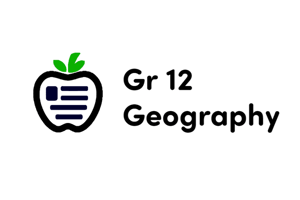Podcast
Questions and Answers
What is the primary function of Geographical Information Systems (GIS)?
What is the primary function of Geographical Information Systems (GIS)?
- Display and manipulate geographically referenced information (correct)
- Measure distances between cities
- Analyze and manage historical information
- Predict future weather patterns
Where does GIS typically store collected data?
Where does GIS typically store collected data?
- Within a database in digital format (correct)
- In a locked cabinet in the office
- In physical paper files
- On cloud servers accessible to the public
What type of data can be used as sources for GIS data collection?
What type of data can be used as sources for GIS data collection?
- Musical scores
- Social media posts
- Artificial intelligence algorithms
- Satellite imagery (correct)
What does GIS software use to analyze spatial relationships within the data?
What does GIS software use to analyze spatial relationships within the data?
In what way does GIS help decision-makers in real-world scenarios?
In what way does GIS help decision-makers in real-world scenarios?
What is one significant benefit of GIS technology?
What is one significant benefit of GIS technology?
What is one advantage of using visualizations in GIS?
What is one advantage of using visualizations in GIS?
Which industries benefit from the real-time monitoring feature of GIS?
Which industries benefit from the real-time monitoring feature of GIS?
How does GIS integration with other software and databases benefit teams?
How does GIS integration with other software and databases benefit teams?
What role do geographical information systems play in decision-making?
What role do geographical information systems play in decision-making?
In what ways do GIS technologies differ from a table of numbers for analysis?
In what ways do GIS technologies differ from a table of numbers for analysis?
Why is real-time monitoring particularly useful in emergency services?
Why is real-time monitoring particularly useful in emergency services?
Flashcards are hidden until you start studying
Study Notes
Understanding Geographical Information Systems (GIS)
Geographical Information Systems (GIS) are powerful tools designed to capture, store, manipulate, analyze, manage, and display all types of geographically referenced information. They are a cornerstone of modern cartography and spatial analysis, providing a wide range of applications across various fields such as planning, transportation, engineering, health, national security, and business. GIS enables users to visualize, understand, interpret, and analyze the earth's features and the relationships between them.
Here's a closer look at some key aspects of GIS technology:
Data Collection
The process begins with collecting data, which can come from various sources such as remote sensing, satellite imagery, GPS tracking devices, or manual measurement and observation. This data is typically stored in digital format within a database, allowing for easy access and retrieval.
Data Analysis
Once collected, GIS software uses algorithms and models to analyze spatial relationships and patterns within the data. This analysis can reveal trends, correlations, and potential scenarios, helping decision-makers identify solutions to real-world problems.
Mapping and Visualization
One of the most significant benefits of GIS is its ability to represent data spatially using customizable maps and graphical overlays. These visualizations allow users to explore and analyze spatial relationships in ways that a table of numbers alone cannot convey, making it easier to understand complex issues.
Real-Time Monitoring
Advanced GIS technologies can track changes in real-time, enabling organizations to respond quickly to emerging situations and adapt strategies accordingly. This feature is particularly useful in industries like emergency services, traffic management, and environmental monitoring.
Integration and Collaboration
Many GIS platforms support integration with other software and databases, allowing seamless sharing of information among teams and stakeholders. This collaboration enhances efficiency and ensures that everyone involved in a project has access to the latest data and insights.
In summary, geographical information systems play a vital role in unlocking the full potential of geospatial data, contributing to smarter decision-making and improved overall performance across numerous sectors.
Studying That Suits You
Use AI to generate personalized quizzes and flashcards to suit your learning preferences.




